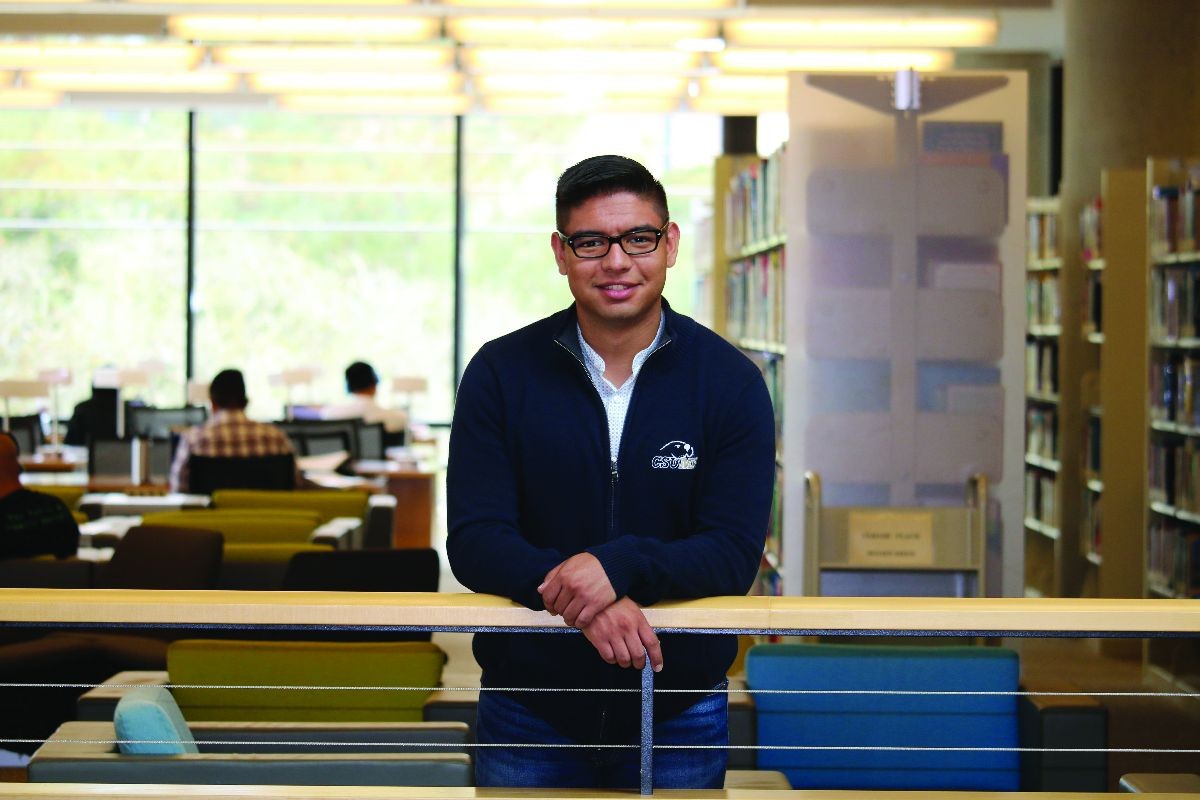CSUMB Magazine
Leaving His Mark
When Heriberto Marquez came to an open house at Cal State Monterey Bay as a high school senior, he knew very little about the place.
Then, he saw a listing for one class, which helped him make his college decision and put him on a path toward becoming a college professor.
The course was forensic anthropology, taught by Professor Ruben Mendoza, a founding faculty member at CSUMB.
Marquez had a long-standing interest in forensics, which began, in part, in response to a tragedy.

“When I was a freshman in high school, I lost my great-grandmother. That was the first real loss I felt. She was a person I was very close to,” Marquez said. “I started to think, wow, there is no guarantee that I will be here tomorrow. And that scared me a lot. For a couple of years in high school, I was terrified of this idea of death.
“Then forensics came into my life – the CSI shows and things like that. And I began to realize, that even when people leave this earth they leave something behind, they leave their bodies. And that’s what got me interested in forensics.”
UROC gave me the support I needed to get to the next level.”— Heriberto Marquez, UROC client
The good news is that Marquez chose a campus that was home to a recognized expert in forensic anthropology. The bad news is that there aren’t any other forensics classes in the CSUMB curriculum.
“I knew if this was something I wanted to pursue later in life, I needed another outlet that would allow me to pursue that goal,” the senior social and behavioral sciences major from Lindsay, Calif. said.
When Marquez learned about the Undergraduate Research Opportunities Center (UROC), he found the path toward an academic career.
“UROC gave me the support I needed to get to the next level,” he said.
He worked on archeological research at the UC Santa Cruz, and traveled to Peru to work with archeological researcher Tiffiny Tung of Vanderbilt University. He learned the many facts that centuries-old human remains could reveal – how people lived and died, and even, by analyzing teeth, what they ate at different stages of their lives.
The preservation of remains is crazy. We had heads where the hair is still attached to the scalp. Eyelashes still attached to eyelids. I had never seen anything like that.”— Heriberto Marquez
As a result of the dry Peruvian climate, Marquez said, “The preservation of remains is crazy. We had heads where the hair is still attached to the scalp. Eyelashes still attached to eyelids. I had never seen anything like that.”
Along the way, Marquez applied for the Sally Casanova Pre-Doctoral Scholarship, which helps prospective doctoral students with the goal of increasing the numbers of CSU faculty members from underrepresented groups.
Sitting in a Starbucks in Peru, Marquez signed onto his email and saw that he had been selected for the scholarship program.
“I freaked out. All the Peruvians looked at me like I was insane,” he said.
Marquez, who will graduate from CSUMB in December, is now applying to graduate schools.